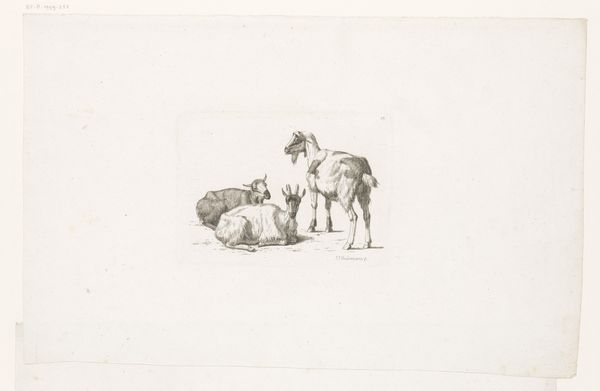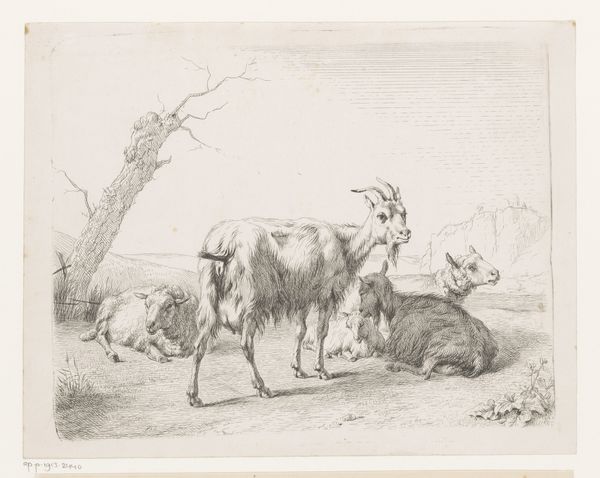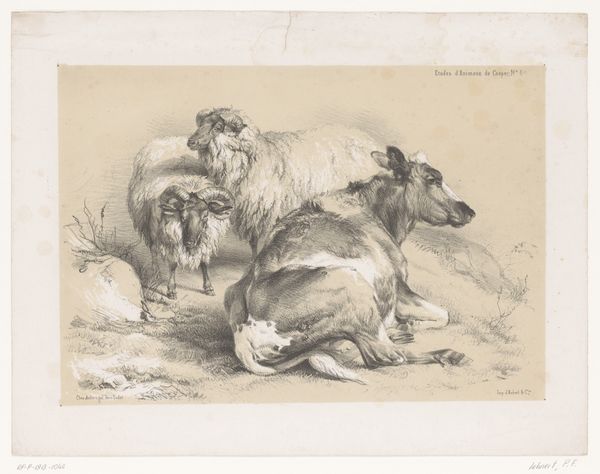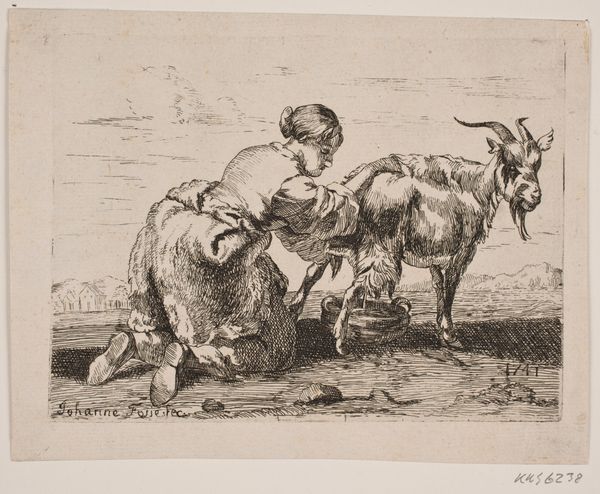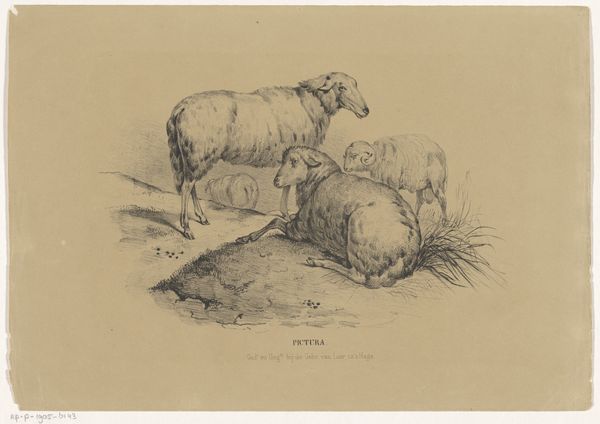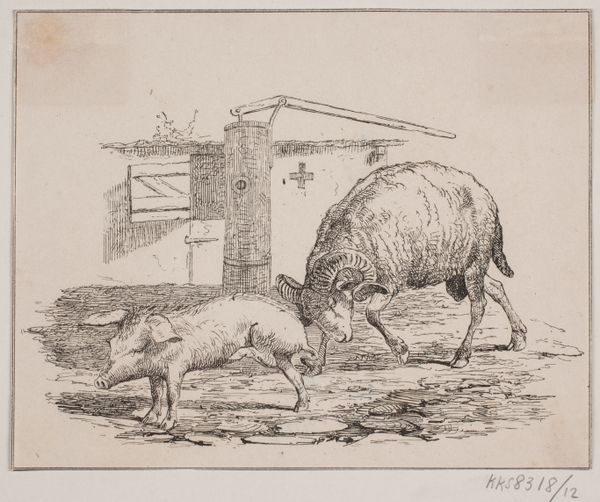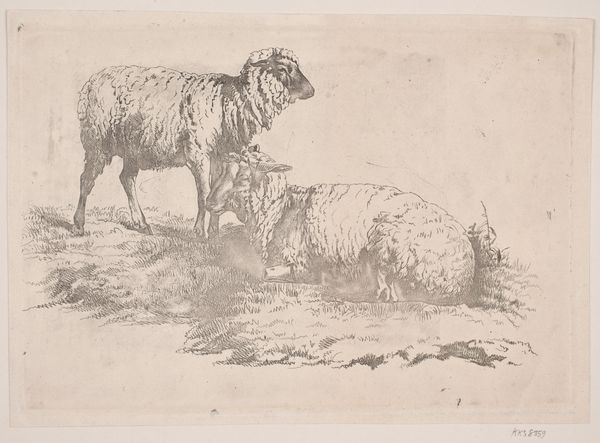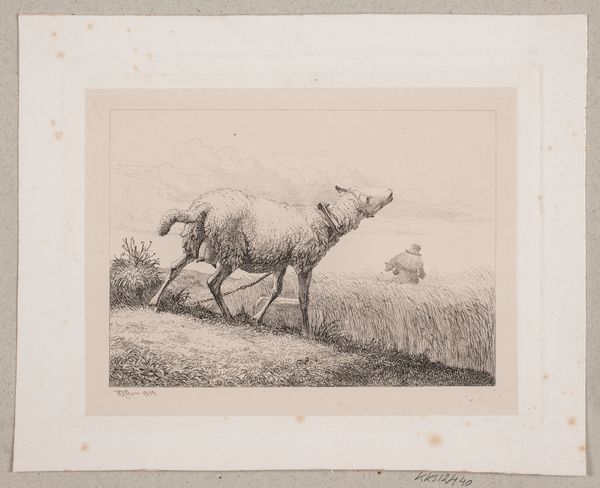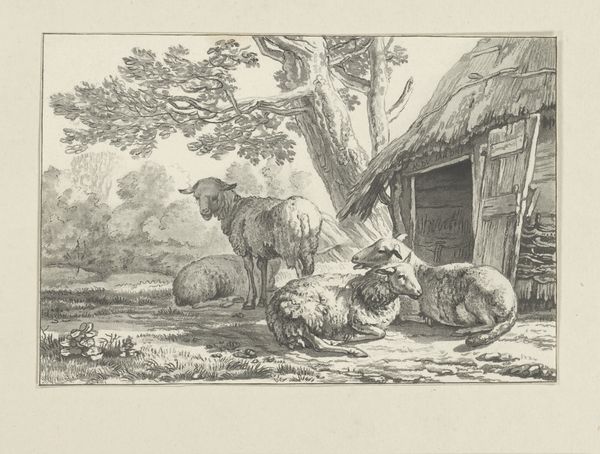
drawing, pencil
#
portrait
#
drawing
#
light pencil work
#
pencil sketch
#
landscape
#
personal sketchbook
#
pen-ink sketch
#
pencil
#
sketchbook drawing
#
pencil work
#
sketchbook art
#
realism
Dimensions: height 237 mm, width 303 mm
Copyright: Rijks Museum: Open Domain
Curator: This sketch, rendered in pencil, offers a tranquil view of sheep. It's titled "Twee schapen en een lam" by Joseph Louis Leborne, dating to before 1841. What's your immediate reaction? Editor: It’s quiet, almost monastic. The softness of the pencil, the tight grouping of the animals, suggests a protective huddle. You can almost feel the texture of the wool. Curator: Sheep, throughout art history, often carry significant symbolic weight. They’re associated with innocence, gentleness, and in Christian iconography, represent the flock of the faithful, guided by a shepherd. Does that resonate here? Editor: Possibly, but I'm also drawn to the artist's hand. Look at the clear mark-making; each stroke meticulously applied to define form and texture. It speaks to a close observation, a real interest in capturing the animal’s materiality. What kind of pencil would have been used to create such varied light effects? Was it locally sourced? I would also want to know more about paper manufacturing at the time. Curator: I agree. Notice the use of light. Leborne has crafted a scene filled with quiet contemplation. But your focus brings to mind a different angle; the socio-economic aspect, which is important too. Sheep were not only symbolic figures, but also valuable resources. The wool, of course, fed the textile industry. The drawing then captures that in-between stage—the animal both as an emblem of peaceful rural life and a key component in the wider economic system. Editor: Precisely! This wasn’t just a random sketch; it's an artistic engagement with the foundational materials that fueled economies and sustained communities. Curator: Seeing how you view this image through a focus on craft brings another perspective, a focus on a social narrative that the images convey from their materiality. I’d initially thought more about its cultural meanings. Editor: It makes you consider the art’s creation in dialogue with not only the subject depicted but also material availability and production practices during Leborne's time. Curator: An important consideration that reframes our viewing of what at first sight might appear a docile landscape sketch. Thank you. Editor: And thank you for the illuminating insights into how we read symbols in visual culture.
Comments
No comments
Be the first to comment and join the conversation on the ultimate creative platform.
